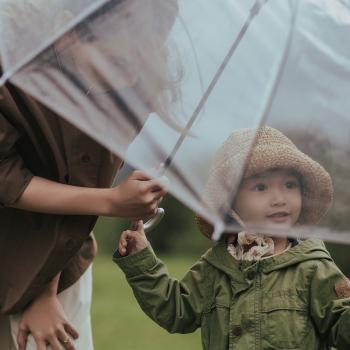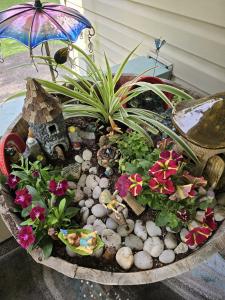
Fantasy in My World
It is that odd transition time between school and summer break; you know, the first week when you don’t have to go but it hasn’t really sunk in yet. To get into the swing of “summer doings,” I have a tradition–faerie gardens. I’m not sure how this got started, but it is a hobby that has deeply touched my inmost creative heart. I am a fan of fantasy, and faerie gardens, faerie stories, and the creative anointing seem to manifest in my life in this particular outlet.
Before you judge me, yes, I do know the difference between fantasy and reality. And I know the difference between childish and childlike. I also have a deep, abiding respect for God’s creation and the growing things that He spoke into being. The nurture of flowers, vegetables, and herbs is an important part of my life in spring, summer, and into fall. In fact, it is the very idea of God’s creative power that has beckoned me to faerie gardens, faerie stories, and the creative anointing.
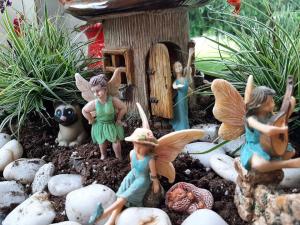
Creation and the Creative Anointing
According to the Bible, in the beginning, God created, and when He made man, He created him in His own image and likeness, with the ability and desire to create.
Authors do it, artists do it, architects to it, great solvers-of-problems do it. Creative imagination takes many forms.
Tolkien and Lewis
When it comes to fantasy and longing for faerie stories, I am in good, dare I say great, company:
“The realm of fairy-story is wide and deep and high and filled with many things: all manner of beasts and birds are found there; shoreless seas and stars uncounted; beauty that is an enchantment, and an ever-present peril; both joy and sorrow as sharp as swords. In that realm a man may, perhaps, count himself fortunate to have wandered, but its very richness and strangeness tie the tongue of a traveller who would report them. And while he is there it is dangerous for him to ask too many questions, lest the gates should be shut and the keys be lost (J.R.R. Tolkien, “On Fairie Stories“).
C. S. Lewis recalls his first experience with the idea:
“Once in those very early days my brother brought into the nursery the lid of a biscuit tin which he had covered with moss and garnished with twigs and flowers so as to make it a toy garden or a toy forest. That was the first beauty I ever knew. What the real garden had failed to do, the toy garden did. It made me aware of nature-not, indeed, as a storehouse of forms and colors but as something cool, dewy, fresh, exuberant….As long as I live my imagination of Paradise will retain something of my brother’s toy garden” (C. S. Lewis (1966). “Surprised by Joy: The Shape of My Early Life”, p.17, Houghton Mifflin Harcourt).
Ah, Narnia began with a garden, just like Genesis, and my porch.
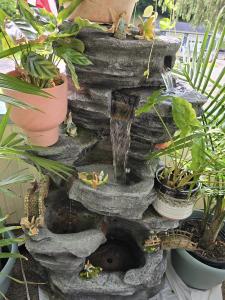
Children accept stories often without question. Tolkien writes that “when the story-maker’s art is good enough [he produces literary belief]. That state of mind has been called “willing suspension of disbelief.” But this does not seem to me a good description of what happens. What really happens is that the story-maker proves a successful ‘sub-creator.’ He makes a Secondary World which your mind can enter” (J.R.R. Tolkien, “On Faerie Stories”).
In my mind, I become the sub-creator, and through my imagination, I arrange an environment where the faerie inhabitants live out their own scenarios. They exist and work and play and rest in the shade of green leaves and small, colorful flowers. I don’t act out stories with the figures (although a child might). I don’t have to. In my moments of “sub-creator,” I place them in their own frames of existence. It’s like writing the introduction to a book: the plot has not yet been revealed, but the setting and characters are carefully arranged.
My Creations
Do my figures have names? Indeed. I have a faerie to represent every grandchild, and there is a chubby grandma faerie (me!) positioned to watch over them.
I enthusiastically recommend the creation of faerie gardens. It’s a wonderful, engaging activity with friends, children, or grandchildren. Young ones learn the basics of gardening, planning a space, imagining a story, and so many more possibilities. They learn to create, and they automatically gain confidence in their own creativity.
Yes, you can invest some money, but my experience started very simply with a few basic pieces and moss, rocks, and flowers from the yard. Rummage sales, the dollar store, the bottom of the toy box, can all yield treasures to include in a faerie garden.
Albert Einstein said, “If you want your children to be intelligent, read them fairy tales. If you want them to be more intelligent, read them more fairy tales.” I might add to that, if you want your children to be creative, help them make faerie gardens, and if you want to nurture their imaginations, let them tell the stories of what happens in those gardens.
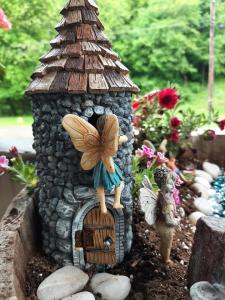
True Myth
I will conclude with this snippet of recorded conversation between Tolkien and Lewis:
“But,” said Lewis, “myths are lies, even though lies breathed through silver.”
“No,” said Tolkien, “they are not. Just as speech is invention about objects and ideas, so myth is invention about truth.”
“We have come from God (continued Tolkien), and inevitably the myths woven by us, though they contain error, will also reflect a splintered fragment of the true light, the eternal truth that is with God. Indeed only by myth-making, only by becoming a ‘sub-creator’ and inventing stories, can Man aspire to the state of perfection that he knew before the Fall. Our myths may be misguided, but they steer however shakily towards the true harbour, while materialistic ‘progress’ leads only to a yawning abyss and the Iron Crown of the power of evil.”
“You mean,” asked Lewis, “that the story of Christ is simply a true myth, a myth that works on us in the same way as the others, but a myth that really happened? In that case,” he said, ” I begin to understand” (Humphrey Carpenter, J.R.R. Tolkien: A Biography).
God bless you, and may faerie gardens, faerie stories, and the creative anointing bring you joy.







